The subtleties of breeding clematis cuttings in summer
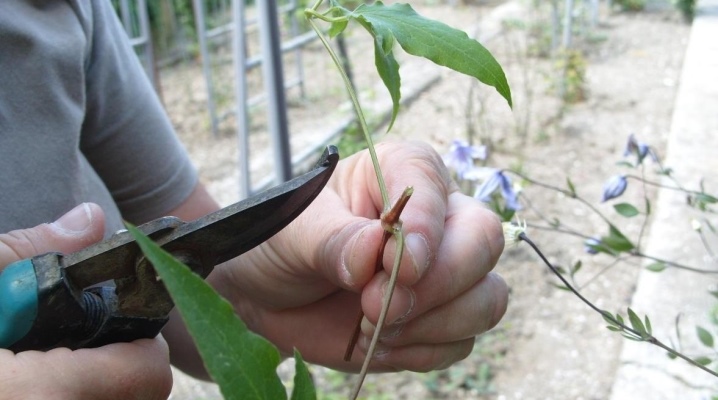
Clematis is one of the most sought-after culture in gardening. Its decorative flowers are pleasing to the eye throughout the growing season; moreover, special care for this plant is not required. The easiest way to propagate clematis is considered to be cuttings; it is best to carry it out in the summer.
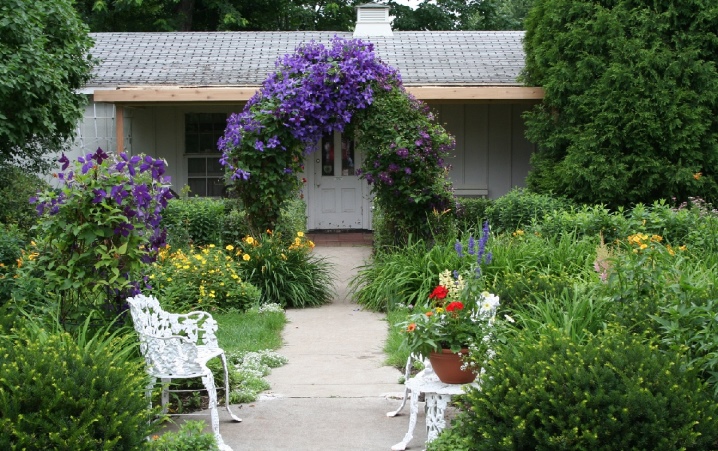
Breeding features and timing
You can propagate clematis with young cuttings at any period of active growth of the bush. In regions with a warm climate, cuttings are harvested at the end of May - June, in northern latitudes it is better to do this in June or July. It will be more correct to focus on the life cycle of plants - the optimal time for harvesting material for rooting is considered the budding period, and you can also cut the cuttings when the first flowers appear.

Important! To determine the readiness of clematis to reproduce, it is necessary to carry out a small test - to bend the selected shoot.
For rooting, only elastic processes are used, therefore, preference should be given to cuttings that will not break from mechanical stress.
Many growers are wondering whether it is possible to cut clematis at the end of summer. It is possible, for the reproduction of this vine, any warm period is allowed, including August, but such specimens will take root more difficult, and it will take much longer to wait for the roots.
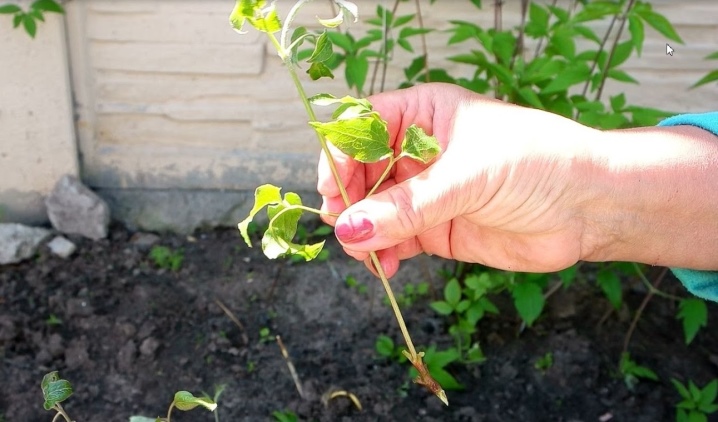
How to choose a bush for cultivation?
It is extremely important to choose the right bush for vegetative propagation. It should be a clematis not younger than 3 years old and not older than 7 years old, the plant should be completely healthy and well developed with no signs of wilting. Before cutting a branch for rooting, you should carefully examine the clematis for fungal infections and the presence of insect pests.
Keep in mind that parasites sometimes hide from the back of the leaf plates, as well as on the roots and even in the soil - therefore, the examination should be scrupulous and comprehensive.
If no signs of pathologies and the presence of parasites are found, you can proceed directly to the preparation of the material.
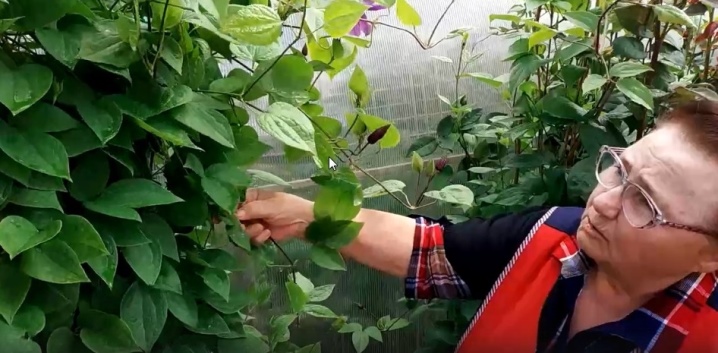
How to prune branches correctly?
Summer is not without reason considered the most suitable period for cuttings, since at this time the bush is densely overgrown with young shoots and there is a good choice among all the branches.
Keep in mind that only the shoots of the current year are suitable for breeding clematis - they are distinguished by their green color and the absence of signs of lignification.
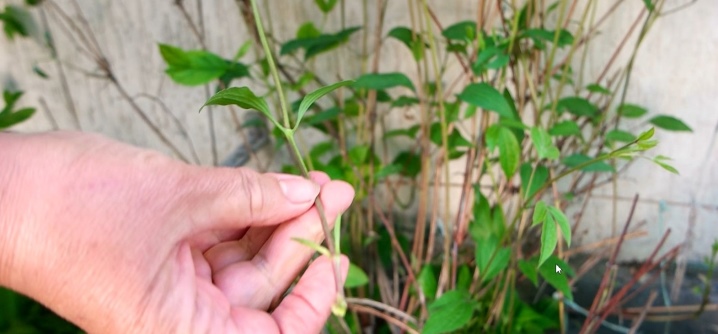
Correct harvesting of cuttings includes the following steps:
- choose shoots suitable for reproduction on clematis;
- cut off the branches you like so that 5–8 cm remains from the base;
- separate the tops with a sharp knife - you will not need them in the future;
- cut the shoots into several parts, so that in each fragment there is one internode containing at least two buds and two leaves; if there are several nodes, then the lower pairs of leaves must be completely removed.
Important! All manipulations should be done with garden shears or a sharpened blade, moving obliquely. Do not forget to pre-sterilize your instruments - for this they are calcined or kept in a solution of potassium permanganate.
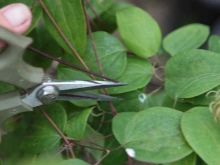
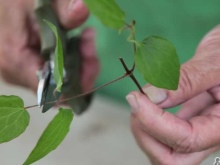
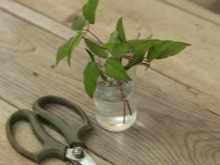
Rooting methods
You can root clematis cuttings in water or soil, Let's dwell on the description of each method in more detail.
In water
Most breeders give preference to rooting clematis cuttings in water. This method works no matter what time of year you decide to breed them. You will need a container with a wide mouth, it is filled with filtered water so that it covers only the lower kidney. The leaves on the handle must be cut into 2⁄3 plates, immediately after that the shoots are placed in a bath and wrapped in thick light paper. The root system is formed within a month, all this time the material should be in a darkened place so that direct sunlight does not fall on it.
Throughout the rooting period, the water must be maintained at the same level, in addition, it should be changed every 7-10 days.
To prevent decay, you can add activated carbon to the liquid and crushed tablet. As soon as the roots grow up to 4–5 cm, the cuttings must be transplanted for further growing in containers with a nutrient substrate.
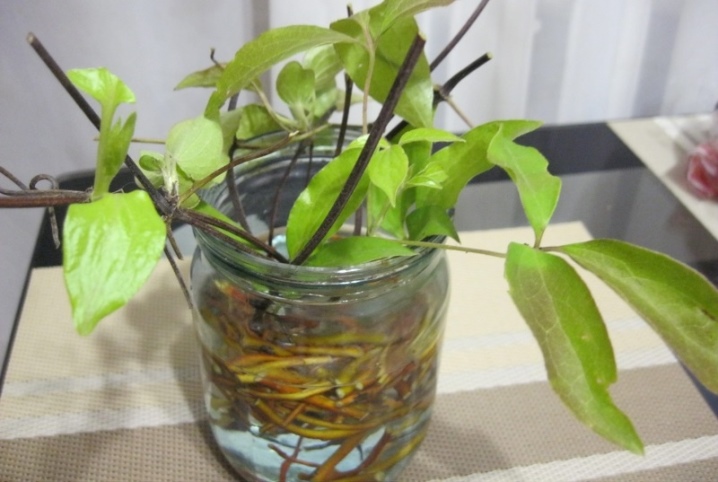
In the substrate
An alternative option would be to plant branches directly into the ground. To propagate cuttings in this way, you should prepare containers and soil mixture in advance. It is better to take plastic planting containers - in this case, before planting in a permanent place, it will be possible to simply cut the walls of the vessel and remove the plant along with the earthy clod without damaging the roots.
It is very important to lay a drainage layer on the bottom and make holes so that excess moisture does not stagnate.

The substrate is made up of garden soil, river sand and peat, taken in a 2x1x1 ratio, it will be useful to add a little wood ash to disinfect the soil. The substrate is poured into a container and cuttings are planted at an angle of 30-40 degrees, deepening no more than 2.5-3 cm, a distance of 7-9 cm should be left between the shoots. Planting material must be placed in a warm, lighted place. Watering is carried out every 4–5 days. The hotter it is in the room, the more watering will be required for future clematis. However, do not get carried away with irrigation - excess moisture leads to rapid decay of the root system, it is best to moisten the ground through a spray bottle so that the top layer of the substrate does not wash out.
Important! Acceleration of cuttings occurs within 3-4 weeks, after which they need to be given a couple of weeks to grow, then the cuttings will become strong enough to transplant them into open ground.
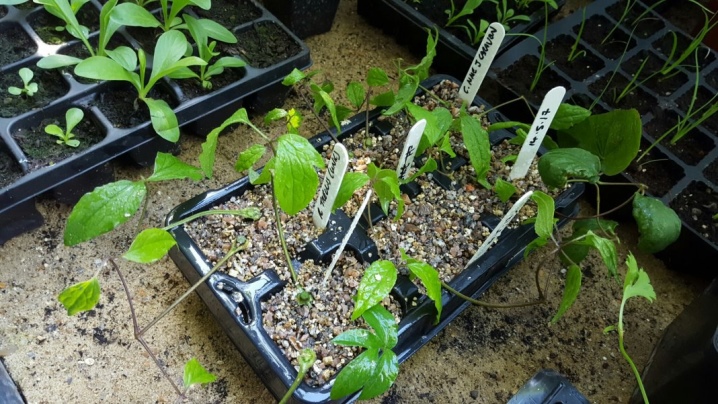
Regardless of the method of grafting you choose, rooting will be more active if the container (with water or soil) is placed in a small greenhouse... You can make it from improvised means, for example, you can cover the stalk with a cut off part of a plastic bottle or plastic wrap. A warm and humid microclimate is formed inside the shelter, which contributes to the rooting of the shoots as much as possible.
Keep in mind that the film must be slightly opened every day in order to air the cuttings - if you do not do this, they will simply suffocate.
After the first roots appear, the greenhouse can be removed.
To speed up the process, you can use solutions of root stimulants. The most effective are "Kornevin", "Kornerost", "Root Super", as well as "Heteroauxin". The preparations are diluted with water in accordance with the instructions, water the container with the appendix.
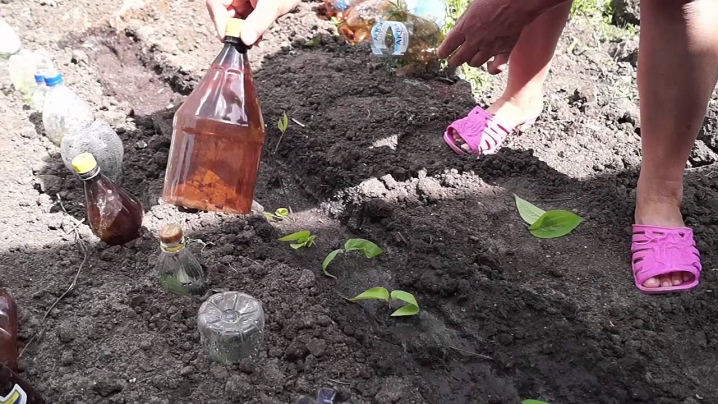
Landing in open ground
After summer cuttings and further rooting, the cuttings can be transplanted into open ground, for this you should choose a well-lit area of land rich in nutrients, the acidity parameters should be neutral.
It is important that in the place of planting clematis there is no high-lying groundwater, as well as lowlands, where stagnation of moisture is formed.
On the site there should be no direct sunlight and draft; it is optimal to plant it near a vertical surface.Small holes are formed in the prepared soil, drainage and soil mixture from peat, river sand, garden turf and humus are necessarily poured. It is better to transplant together with an earthen lump. It is better to dig in a vertical support in advance, otherwise there is a great chance of damaging the delicate roots of a young plant.

After planting, it is better to cover the fresh bed with agrofibre so that nothing prevents young clematis from settling in a new place - the opening is removed after 7-10 days.
Keep in mind - if you cut off branches for breeding at the end of summer, then you should not plant clematis before winter, leave it indoors until spring.
Rooted cuttings transplanted in the middle of summer will have time to fully take root by winter, they will be able to survive the winter well. Clematis can withstand frosts quite persistently, but young seedlings will need preparation. It is best to cover them with a layer of mulch or roofing felt.
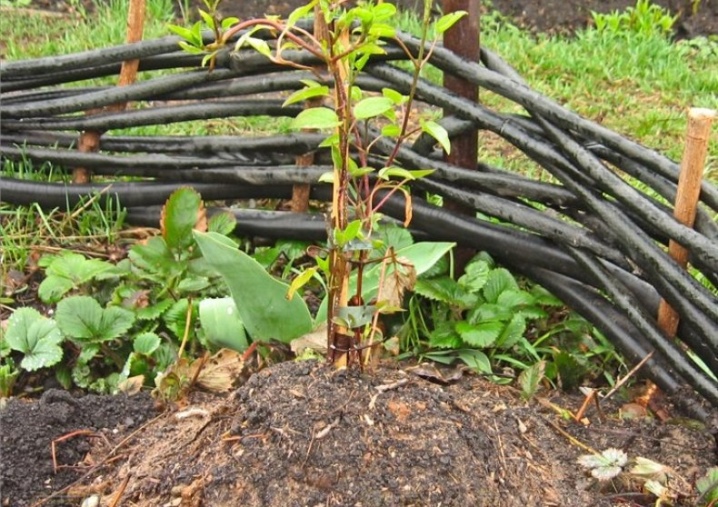
Further care
Caring for young clematis after they have taken root in an open area is not particularly difficult. The plant will need regular watering, preferably a couple of times a week. Fertilizers must be applied every 14 days - at first it is better to use nitrogenous compounds, this element contributes to the active growth of green mass.
If the next day after watering you notice a crust on the ground, be sure to loosen it, the soil must be permeable so that air can freely flow to the roots.
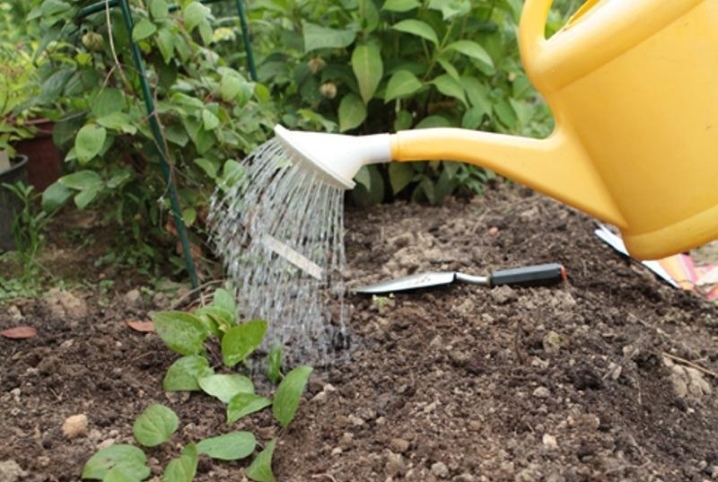
So, summer cuttings of clematis at home is a simple and understandable process even for beginners in floriculture... The most important thing in this case is to correctly perform the entire sequence of actions, then you will not have any problems with the summer rooting of cuttings. Correctly propagated clematis can please its owners with abundant flowering as early as the next season, although some varieties release flowers only after 2-3 years.
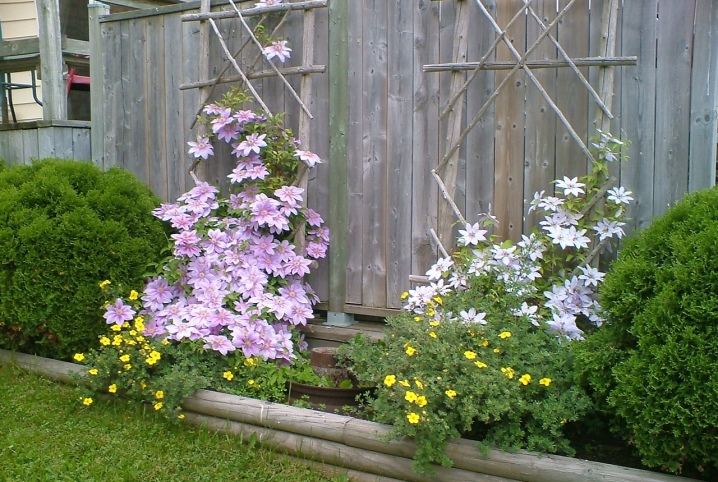
You can get acquainted with the features of the reproduction of clematis by cuttings in the following video.







































































































The comment was sent successfully.